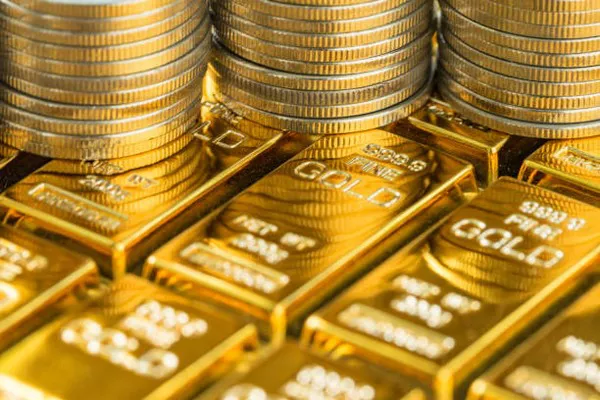In the realm of investments, gold has long been regarded as a reliable asset, valued for its stability and ability to act as a hedge against economic uncertainty. Whether you’re looking to liquidate assets or capitalize on market trends, selling a 1-ounce gold coin demands careful consideration and strategic planning. This guide aims to provide a comprehensive overview, covering essential steps, factors influencing pricing, and tips for maximizing returns when selling your gold coin.
Understanding Your 1-Ounce Gold Coin
Before diving into the selling process, it’s crucial to understand the specifics of your gold coin. Factors such as its purity (typically expressed in karats or fineness), mint year, rarity, and condition significantly influence its market value. For instance, coins from renowned mints like the U.S. Mint or the Royal Canadian Mint may command higher premiums due to their quality and reputation.
Assessing Market Conditions
Like any commodity, the price of gold fluctuates based on market demand, geopolitical events, inflation rates, and currency movements. Monitoring these factors can provide valuable insights into the optimal time to sell your gold coin. Utilizing reputable financial news sources, market indices, and consulting with trusted advisors can help you make informed decisions.
Determining the Value of Your Gold Coin
Several methods exist for assessing the value of your 1-ounce gold coin:
Intrinsic Value: This refers to the market value of the gold content itself, typically based on the current spot price of gold. Most 1-ounce gold coins are made from .999 fine gold, meaning they are 99.9% pure.
Numismatic Value: Beyond its gold content, a coin may have numismatic value based on rarity, historical significance, or collector demand. Numismatic value can fluctuate independently of the gold price and may add significant premiums to the coin’s overall worth.
Premiums and Discounts: Dealers and buyers often apply premiums or discounts to the spot price of gold based on factors like coin condition, market demand, and transaction costs. Understanding these adjustments is crucial when negotiating a sale.
Choosing Where to Sell Your Gold Coin
Several avenues are available for selling your 1-ounce gold coin, each with its advantages and considerations:
Local Coin Shops: Brick-and-mortar coin shops offer convenience and personal interaction but may not always provide the best price. Research multiple shops and seek recommendations to ensure fair valuation.
Online Marketplaces: Platforms like eBay, Craigslist, or specialized bullion marketplaces allow you to reach a broader audience. However, navigating fees, shipping logistics, and ensuring buyer trustworthiness are critical considerations.
Bullion Dealers: Established bullion dealers specialize in buying and selling precious metals. They often offer competitive prices and may provide liquidity advantages. Research dealer reputations and policies before engaging in transactions.
Auction Houses: For rare or highly collectible coins, auction houses offer a platform to maximize returns through competitive bidding. However, auction fees and waiting periods should be weighed against potential gains.
Preparing Your Gold Coin for Sale
Presentation and documentation play vital roles in facilitating a successful sale:
Authentication: Ensure your coin’s authenticity through reputable grading services or certifications from recognized authorities.
Photography: High-quality images showcasing the coin’s details and condition enhance buyer confidence, especially for online sales.
Documentation: Maintain records of purchase receipts, certificates of authenticity, and any relevant historical information to verify the coin’s provenance and enhance its marketability.
Negotiating the Sale
When negotiating with potential buyers or dealers:
Knowledge is Power: Arm yourself with knowledge about current market trends, the intrinsic value of gold, and comparable sales to negotiate confidently.
Flexibility: Be prepared to adjust your selling strategy based on prevailing market conditions and buyer preferences.
Professionalism: Maintain clear communication, adhere to agreed terms, and prioritize secure payment methods to mitigate transaction risks.
Executing the Sale
Once terms are agreed upon:
Transaction Verification: Verify the authenticity of payment methods, such as bank transfers or cashier’s checks, before transferring ownership of the coin.
Shipping and Insurance: If selling online or remotely, utilize secure shipping methods and comprehensive insurance coverage to protect against loss or damage during transit.
Legal Considerations: Familiarize yourself with local regulations and tax implications related to precious metal sales to ensure compliance and avoid unexpected liabilities.
See Also 24 Karat Gold: Where to Find the Purest Gold
Conclusion
Selling a 1-ounce gold coin demands meticulous preparation, market awareness, and strategic decision-making. By understanding your coin’s value, choosing the right selling platform, and navigating negotiations with professionalism and foresight, you can optimize your returns and achieve a successful transaction. Whether driven by financial goals or market opportunities, leveraging these insights will empower you to navigate the complexities of selling precious metals effectively and confidently.


